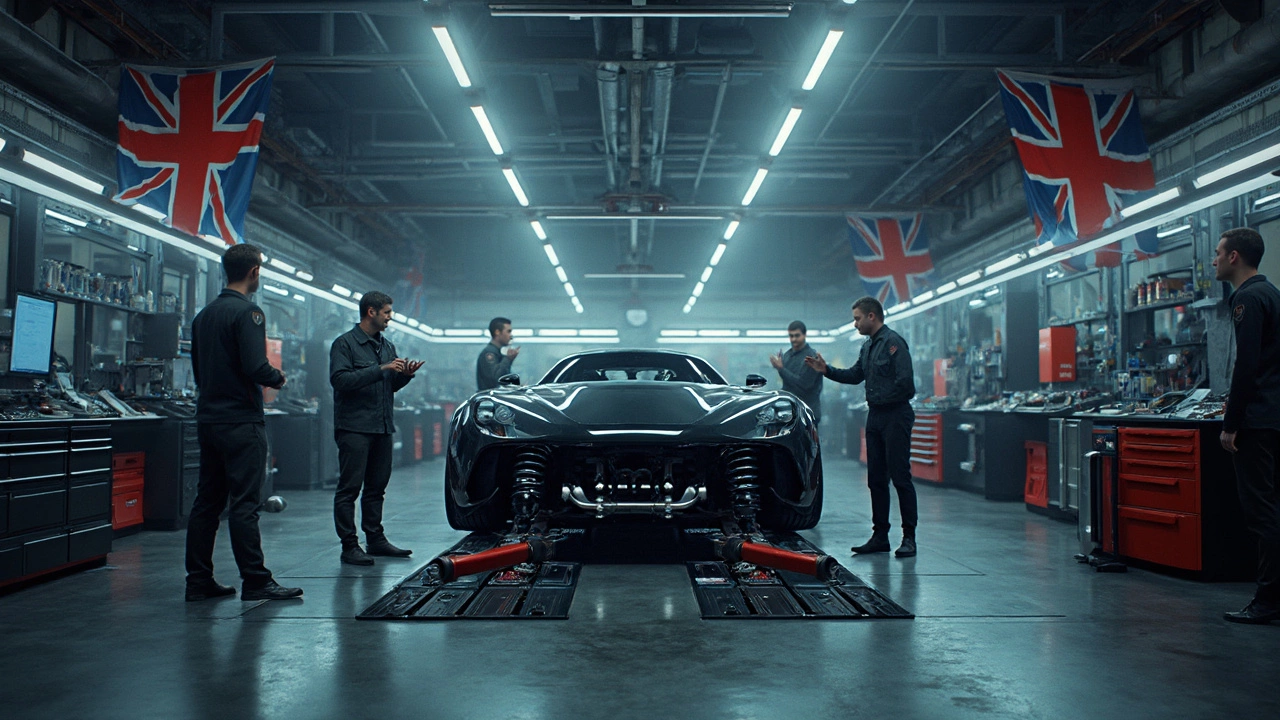So, you’re eyeing that perfect ride height to give your car a fresh look and possibly a performance boost. But now you're stuck at a crossroads: coilovers or lowering springs? Each option brings its own flair to the table, and understanding them can help decide which suits your wheels best.
Whether you’re a car enthusiast or just looking to give your vehicle some much-needed love, it’s not just about the aesthetics. Sure, that lowered stance is eye-catching, but what about the ride quality, handling, and the impact on your wallet? Let's explore both options to see which might be the better fit for your needs.
- What Are Coilovers?
- The Benefits of Lowering Springs
- Cost Comparison: Coilovers vs. Lowering Springs
- Making the Right Choice for Your Ride
What Are Coilovers?
If you ever peeked under a car at a meet or in your garage and saw that curly piece of art surrounding a shock absorber, you've met a coilover. But what exactly are they? Simply put, a coilover is a combination of a spring and strut wrapped together in one adjustable unit. It's like the Swiss Army knife of the suspension world—versatile, dynamic, and able to transform your ride.
The magic of coilovers lies in their adjustability. Unlike standard suspension setups, coilovers allow you to tweak the height of your car with just a few turns of a wrench. This means you can go low for the aesthetics or keep it practical for daily driving. And it's not just about height; you can adjust the damping to fine-tune the ride comfort or stiffness according to your preference.
"Coilovers provide an unparalleled level of customization and performance for automotive enthusiasts," says Jim Thompson of AutoTuning Magazine. "They’re the go-to solution for those looking to push their vehicles to the limits on the track or cruising the streets."
The choice of coilovers is vast, with options ranging from budget-friendly to high-end setups designed for professional racing. Brands like KW, Bilstein, and Tein offer a variety of models catering to different needs. Noteworthy is that investing in coilovers often means your car will handle better in corners, reducing body roll—a common enemy of sport driving enthusiasts.
According to a recent survey by Auto Enthusiast Daily, around 60% of car owners installing coilovers reported a significant improvement in handling and overall driving experience. The ability to personalize the driving dynamics makes coilovers a popular upgrade among gearheads.
While coilovers sound like the holy grail of suspension mods, it's essential to keep in mind that they do require more maintenance compared to regular shocks and springs. Frequent checks and occasional cleaning can help extend their lifespan. So if you're thinking of upgrading, weigh the long-term commitment involved too.
The Benefits of Lowering Springs
When it comes to tweaking your ride’s stance, lowering springs are like the friendly companion you didn’t know you needed. These nifty devices aren’t just about making your car look closer to the ground; they're about improving the whole driving experience without breaking the bank.
First off, lowering springs are generally more budget-friendly than coilovers. If you’re on a tight budget but still want that slick, lowered look, springs could be your way to go. They're perfect for those who want significant change without a significant investment.
Now, let’s talk about handling and performance. By lowering your car's center of gravity, these springs enhance the car's grip on the road, especially when hugging those sharp corners or tackling hills. So, every twist and turn feels a bit more thrilling with this upgrade.
Lowering springs are also pretty low-maintenance compared to coilovers. Once they're installed, you don’t need to fuss with adjustments. It’s a simple set-it-and-forget-it kind of deal. Plus, the installation is usually quicker and simpler, often not requiring as much mechanical expertise or time.
One interesting tidbit is that by reducing the ride height, springs can decrease lift and drag on the car, which may slightly improve fuel efficiency. While this won’t turn your ride into a hybrid, every little bit counts when you're logging those miles!
And last but definitely not least, they offer a more predictable daily driving experience. While coilovers allow for lots of customization, if you're not racing on a track, the simplicity and reliability of lowering springs will often be perfect for everyday use.

Cost Comparison: Coilovers vs. Lowering Springs
When it comes to cash, the choice between coilovers and lowering springs can feel like a heavyweight battle. So, what's the deal with their price tags?
Let’s start with lowering springs. They're generally the cheaper option, making them a favorite for those wanting a quick drop in ride height without breaking the bank. You’re looking at spending around $100 to $300 for a full set. Pretty solid, right? They're perfect if you're after that lowered look and don't need to tweak much else.
Now, onto the big guns: coilovers. These aren't just about lowering your car; they give you a chance to fine-tune almost every aspect of your ride. But that kind of flexibility comes with a cost. A decent set of coilovers can set you back anywhere from $800 to over $2000. Yep, that's a chunk of change, but you’re paying for adjustability and control.
Here’s a quick comparison:
| Feature | Lowering Springs | Coilovers |
|---|---|---|
| Average Cost | $100 - $300 | $800 - $2000+ |
| Adjustability | Low | High |
| Installation | Less complex | More involved |
So, what about installation? Springs tend to be easier and cheaper to install, which is another win for those trying to dodge a hefty mechanic's bill. Meanwhile, coilovers might call for a bit more expertise, potentially upping those costs if you’re outsourcing the job.
It boils down to what you’re after: if you just want that low, sleek vibe without the fuss, lowering springs might be your jam. But if you’re ready to invest in your ride’s performance and appearance, coilovers could very well be worth the spend.
Making the Right Choice for Your Ride
Deciding between coilovers and lowering springs largely depends on what you’re looking to achieve with your ride. It's all about balancing your needs and budget.
If you're after a custom setup with lots of flexibility, coilovers might be your best bet. They let you adjust your ride height and dampening to fit specific driving conditions, whether it’s track racing or daily cruising. This flexibility makes them popular with enthusiasts who love tailoring their car's performance.
On the other hand, if you're mainly interested in dropping that ride height a bit for a sleek look and better handling without breaking the bank, lowering springs are a solid choice. They provide an affordable way to lower your car without needing the detailed tuning offered by coilovers.
Let's break it down with a quick comparison:
- Versatility: Coilovers win this round. You can fine-tune them to get the exact response and ride you want, perfect for folks who like a custom feel.
- Cost: Lowering springs are kinder on your wallet. They're a great starting point for those new to suspension mods and just looking to dip their toes in the modding scene.
- Installation: Installing lowering springs tends to be a straightforward job. Meanwhile, coilovers, with their tuning potential, might need a bit of expertise or extra time to set up just right.
A handy tip? Think about your driving habits and where your priorities lie. Are you hitting the track regularly, or is the daily commute more your style? Neither option is universally better—it’s about what works for you and your ride.”




